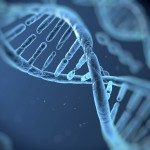About
All genes that we have identified as associated with deafness, except for the gene encoding pejvakin which is responsible for DFNB59, lead to a primary deficit in the peripheral auditory sensory system. An in-depth study of mice deficient in these genes has revealed that their inactivation leads to a variety of defective processes or structures including: (i) the hair bundle, the mechanoreceptive structure of the hair cells to sound, which performs auditory MET; (ii) the tectorial membrane, which is directly involved in the shearing motion of the hair bundle induced by sound; (iii) the inner hair cell ribbon synapse; and (iv) cochlear ionic homeostasis, in particular involving the stria vascularis.
Notably, the lab has shown that several forms of deafness including Usher syndrome are causing defects of hair bundle links. With the exception of the tip-link (a single link, central to the MET machinery), the function of these links was unknown. Our work has enabled both the molecular composition and function of these links to be deciphered. Embryonic transient lateral links are composed of proteins encoded by the Usher syndrome type 1 genes and are involved in early hair bundle cohesion and orientation. Ankle links are early lateral transient links composed of proteins encoded by the Usher syndrome type 2 genes and play a role in hair bundle functional polarity. Finally, the mature outer hair cells links, termed the top connectors, are composed of stereocilin, which is encoded by the DFNB16 gene, and are involved in acoustic distortions and suppressive masking.
Moreover, we showed that the five proteins encoded by the genes responsible for Usher syndrome type1 (myosin VIIA, harmonin, cadherin23, protocadherin15 and sans) form a molecular network that creates embryonic lateral transient links and anchors them to the actin filaments of stereocilia of the hair bundle. Four of these proteins also belong to the auditory mechanoelectrical transduction machinery (protocadherin15 CD2, sans, harmoninb and myosin VIIA).
In addition, the Usher 1 protein complex is also associated with calyceal processes of primate photoreceptor cells which are microvilli structures showing similarities with the stereocilia of the hair bundle.

